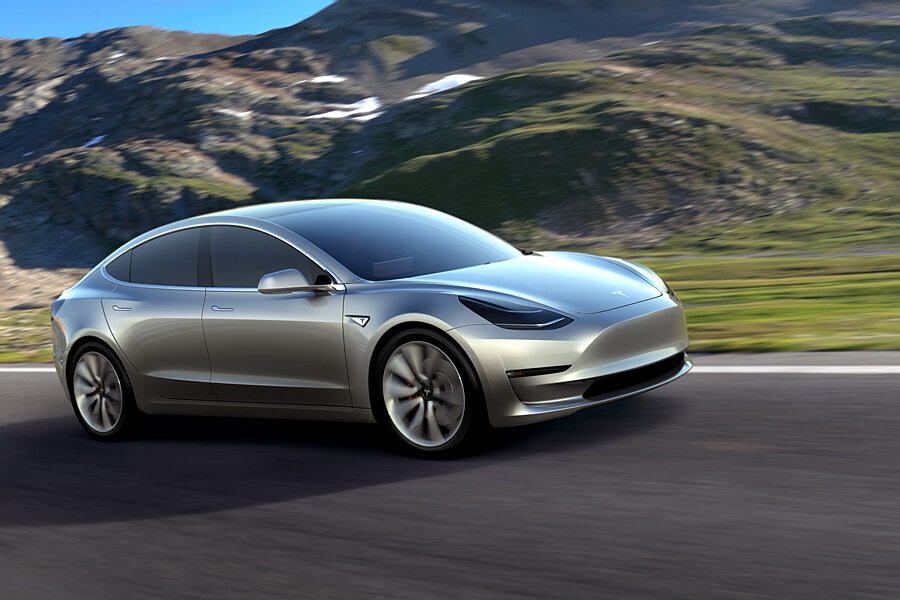Tesla’s Model 3: too much demand, too little capacity to deliver?
Loading...
Within just the 24 hours Tesla’s launch of its Model 3, the company received 180,000 pre-orders orders, and up to 276,000 within 72 hours. And as of Thursday, the orders had increased up to 325,000, the company announced.
The enthusiasm for the electric car – which is set to sell at an average price of $42,000 – continues to soar. Yet many still wonder if the company’s deliveries will match the pre-orders.
Its most recent vehicle, the "falcon-wing" Model X SUV, was expected to arrive mid 2014, but was only delivered to customers in late 2015.
On Monday the company announced that it delivered 14,820 vehicles in the first quarter including 12,420 Model S sedans and 2,400 Model X utility vehicles, 2,000 short of the 16,000 deliveries that it had promised to deliver in the first quarter.
At the unveiling of the Model 3 last week, Company Chief Executive Elon Musk contended that they had learned from their past mistakes, adding that he felt “fairly confident” that the electric vehicle would be delivered next year. Mr. Musk has touted the company’s potential, saying its Fremont production facility has the capability to produce up 500,000 vehicles. But he also admitted the production planning would have to change in order to meet the demands.
“I think the mistake we made with the Model X, which I really think we’ve taken to heart at Tesla, is that we put too many new features and technologies, too many great things all at once, into a product.”
Some analysts agree that Tesla might be able to deliver if the new model doesn’t involve a complicated design that would require more production time.
“If they have less bells and whistles, which they probably will, the production should be a bit easier from that standpoint,”Jessica Caldwell, senior analyst at Edmunds.com, told the Los Angeles Times. “They're producing a higher number [of vehicles], but the complexity of production would be less.”
But others are still skeptical. As the Daily Beast’s Edward Niedermeyer put it:
“It’s highly unusual for an automaker to preview a production vehicle so far from its actual launch date for a variety of reasons: as Musk admits, the car is likely to change during the next two years of development work. In the meantime, a heavily hyped but unavailable car could cut into demand for Tesla’s existing models. With Tesla’s cash reserves falling below $1 billion and dwindling fast, the company might not survive long enough to launch the car people are currently lined up for.”








